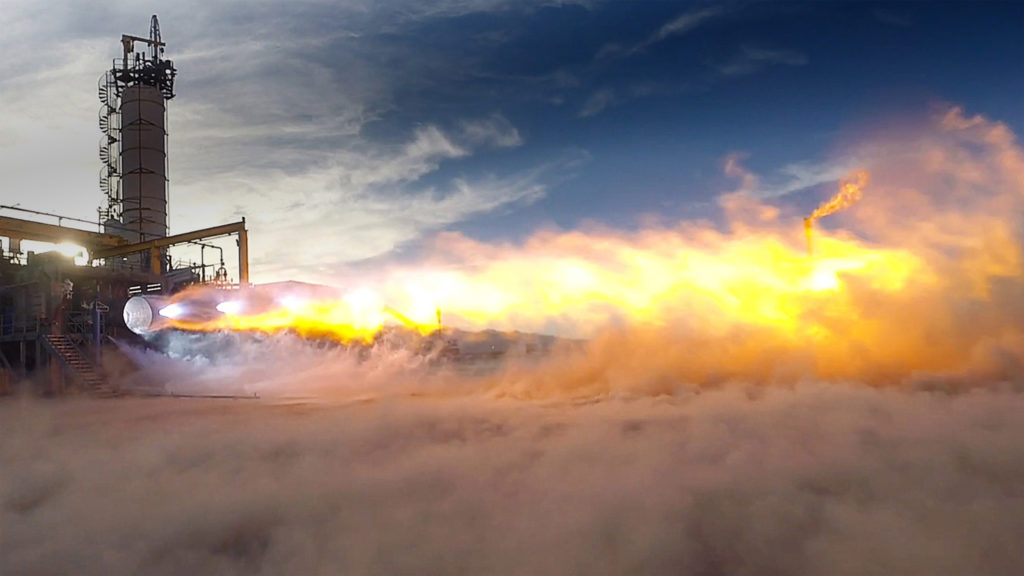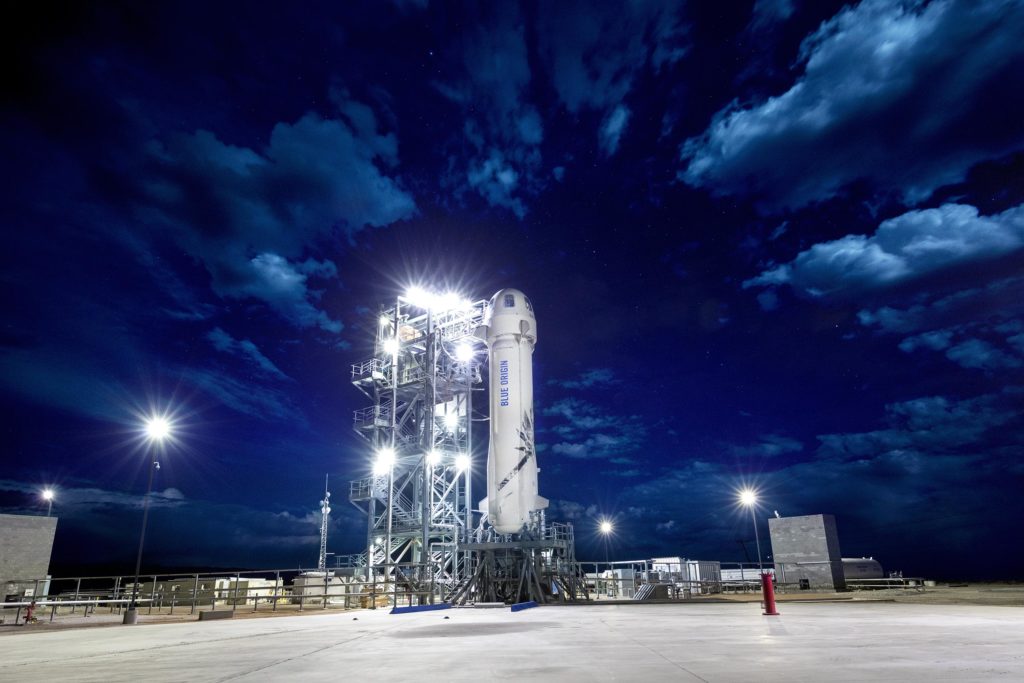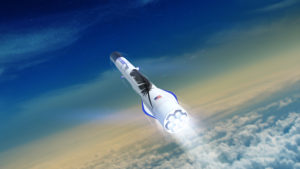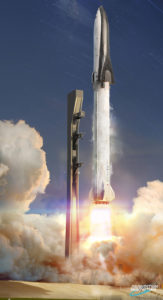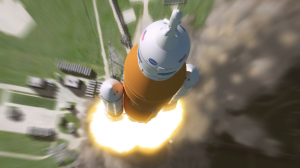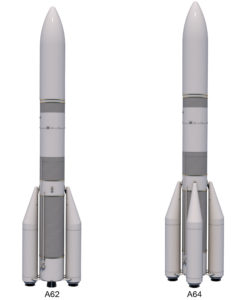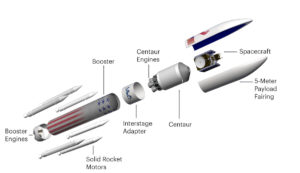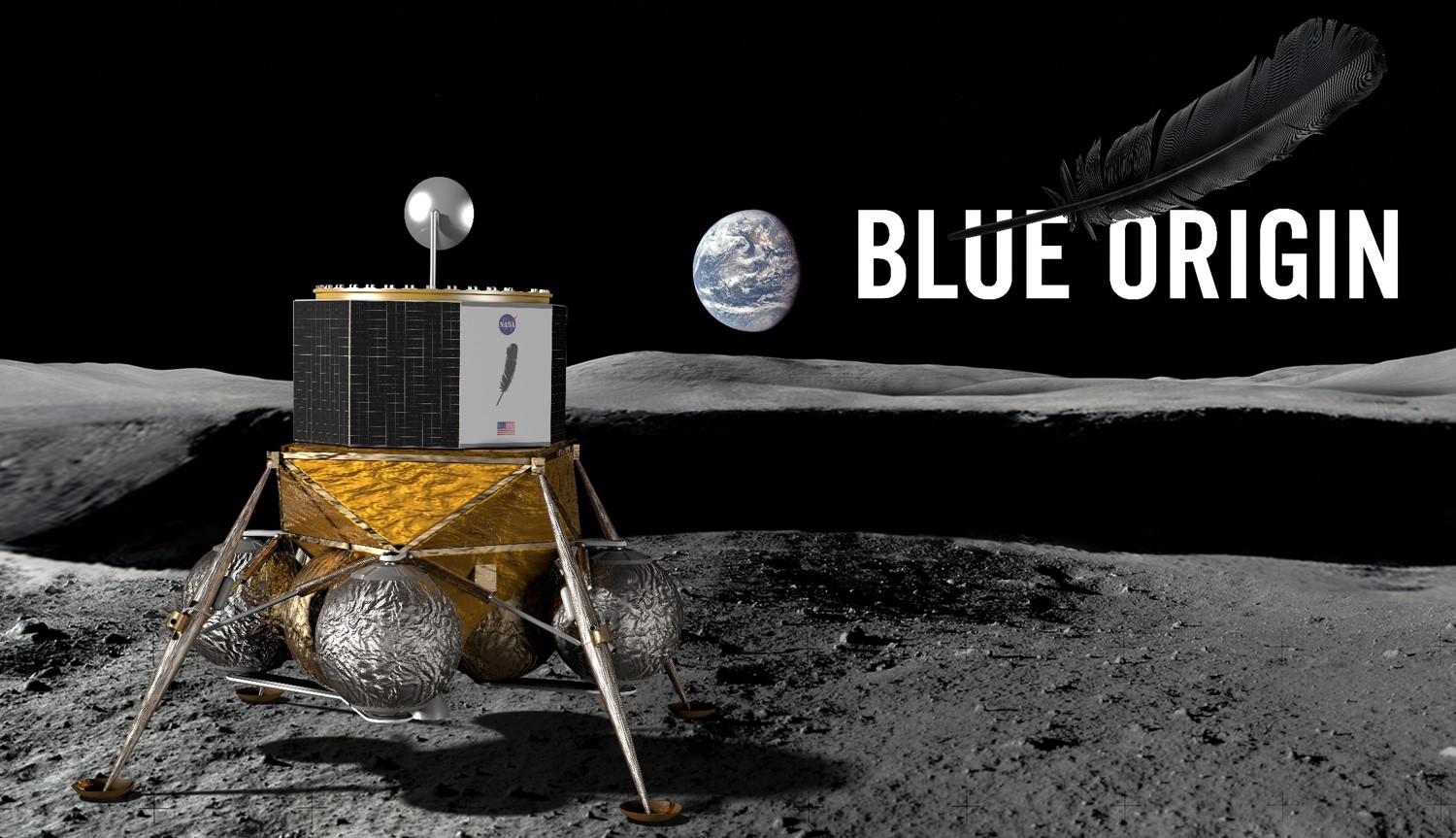

News
SpaceX competitor Blue Origin targets first Moon landing for 2023
Prospective SpaceX competitor and reusable rocket developer Blue Origin detailed its plans earlier this month to enable significant human presence on the Moon and announced a tentative schedule that could see the company begin experimental lunar landing tests of a multi-ton spacecraft just a few years from today – NET 2023.
Funded entirely with stock sales courtesy of founder Jeff Bezos’ lucrative position at the helm of Amazon (not to mention his status as the wealthiest human alive), Blue Origin receives roughly $1 billion annually to develop its space tourism-oriented New Shepard rocket and capsule (suborbital), the magnitudes-larger orbital New Glenn launch vehicle, and a number of other longer-term projects like human colonies in Earth orbit (including the Moon).
In answer to my question, @ac_charania said would evolve to reusable Blue Moon lander. Also under consideration is reusable New Glenn upper stage & faring. https://t.co/Dg3UTN9HU5
— Charles A. Lurio (@TheLurioReport) July 4, 2018
Think SpaceX in terms of ambition (and, perhaps, quality of workforce) but with essentially no existential motivation to field products quickly – framed a bit less flatteringly, Blue Origin moves very slowly when compared with SpaceX. The company was born a full two years before SpaceX and has been working on reusable rockets for at least as long, yet has less than ten launches of a genuinely reusable rocket to claim its own. That rocket, New Shepard, is a purely suborbital, single-stage vehicle intended to enable zero-gee tourism, and is downright minuscule when examined alongside Falcon 9 and Heavy.
- Blue Origin’s BE-4 engine, the propulsion for New Glenn, seen conducting hot-fire tests in Texas. The engine’s nozzles is a full 6 feet (~1.8m) in diameter. (Blue Origin)
- New Shepard ahead of Blue Origin’s most recent suborbital launch, the eighth completed so far. April 2018. (Blue Origin)
New Glenn, however, would truly catapult Blue Origin into a competitive position in the orbital launch business, placing them alongside companies like SpaceX, ULA, and Arianespace. Further, Blue appears to believe that it can design and produce New Glenn boosters capable of as many as 25 flights from the get-go, versus the three years SpaceX spent iteratively design and upgrading its Falcon 9 before arriving at a booster potentially capable of 10-100 reuses. New Glenn’s inaugural launch is currently scheduled for late 2020, and the impressive BE-4 methalox rocket engine powering its first stage is well into serious hot-fire testing, while the engine that will power New Glenn’s upper stage is already successfully flying (albeit as a sea-level variant) on New Shepard.
In a glance, Blue Origin undoubtedly has a lot going for it, although its confidence quite plainly outstrips its the achievements it can actually lay claim to at present. Nevertheless, the company’s Blue Moon project is clearly serious and will build heavily on the (hoped for) successes of New Shepard and New Glenn, integrating the hands-on experience and technologies developed over the course of building and launching both rockets. Presumably depending on New Glenn as the launch vehicle, Blue Origin stated on July 3 that its lunar lander – designed to deliver multiple tons of cargo to the Moon’s surface – could begin experimental Moon missions by 2023 and potentially even sooner if work proceeds exceptionally smoothly.
- Blue Origin’s New Glenn rocket. (Blue Origin)
- SpaceX’s BFR. (Gravitation Innovation/David Romax)
- Credit: NASA-MSFC
- Arianespace’s next-generation Ariane 6. (Arianespace)
- ULA’s upcoming Vulcan rocket. (ULA)
Whether or not Blue Origin manages to make that extraordinarily aggressive scheduled and jumps from suborbital missions to giant orbital reusable rocket launches to multi-ton Moon landings in barely five years, the 2020s are lining up to be an extraordinarily exciting time for spaceflight. With any luck, a veritable fleet of next-generation rockets from Blue Origin, SpaceX, Arianespace, ULA, NASA, Japan, and five or more smaller commercial companies will complete their first launches over the next three years.
Meanwhile, heavyweights SpaceX and Blue Origin may find themselves in a whole different arena, racing to land payloads on the Moon (or perhaps on the Moon and Mars).

Elon Musk
Elon Musk and Tesla AI Director share insights after empty driver seat Robotaxi rides
The executives’ unoccupied tests hint at the rapid progress of Tesla’s unsupervised Robotaxi efforts.

Tesla CEO Elon Musk and AI Director Ashok Elluswamy celebrated Christmas Eve by sharing personal experiences with Robotaxi vehicles that had no safety monitor or occupant in the driver’s seat. Musk described the system’s “perfect driving” around Austin, while Elluswamy posted video from the back seat, calling it “an amazing experience.”
The executives’ unoccupied tests hint at the rapid progress of Tesla’s unsupervised Robotaxi efforts.
Elon and Ashok’s firsthand Robotaxi insights
Prior to Musk and the Tesla AI Director’s posts, sightings of unmanned Teslas navigating public roads were widely shared on social media. One such vehicle was spotted in Austin, Texas, which Elon Musk acknowleged by stating that “Testing is underway with no occupants in the car.”
Based on his Christmas Eve post, Musk seemed to have tested an unmanned Tesla himself. “A Tesla with no safety monitor in the car and me sitting in the passenger seat took me all around Austin on Sunday with perfect driving,” Musk wrote in his post.
Elluswamy responded with a 2-minute video showing himself in the rear of an unmanned Tesla. The video featured the vehicle’s empty front seats, as well as its smooth handling through real-world traffic. He captioned his video with the words, “It’s an amazing experience!”
Towards Unsupervised operations
During an xAI Hackathon earlier this month, Elon Musk mentioned that Tesla owed be removing Safety Monitors from its Robotaxis in Austin in just three weeks. “Unsupervised is pretty much solved at this point. So there will be Tesla Robotaxis operating in Austin with no one in them. Not even anyone in the passenger seat in about three weeks,” he said. Musk echoed similar estimates at the 2025 Annual Shareholder Meeting and the Q3 2025 earnings call.
Considering the insights that were posted Musk and Elluswamy, it does appear that Tesla is working hard towards operating its Robotaxis with no safety monitors. This is quite impressive considering that the service was launched just earlier this year.
Elon Musk
Starlink passes 9 million active customers just weeks after hitting 8 million
The milestone highlights the accelerating growth of Starlink, which has now been adding over 20,000 new users per day.

SpaceX’s Starlink satellite internet service has continued its rapid global expansion, surpassing 9 million active customers just weeks after crossing the 8 million mark.
The milestone highlights the accelerating growth of Starlink, which has now been adding over 20,000 new users per day.
9 million customers
In a post on X, SpaceX stated that Starlink now serves over 9 million active users across 155 countries, territories, and markets. The company reached 8 million customers in early November, meaning it added roughly 1 million subscribers in under seven weeks, or about 21,275 new users on average per day.
“Starlink is connecting more than 9M active customers with high-speed internet across 155 countries, territories, and many other markets,” Starlink wrote in a post on its official X account. SpaceX President Gwynne Shotwell also celebrated the milestone on X. “A huge thank you to all of our customers and congrats to the Starlink team for such an incredible product,” she wrote.
That growth rate reflects both rising demand for broadband in underserved regions and Starlink’s expanding satellite constellation, which now includes more than 9,000 low-Earth-orbit satellites designed to deliver high-speed, low-latency internet worldwide.
Starlink’s momentum
Starlink’s momentum has been building up. SpaceX reported 4.6 million Starlink customers in December 2024, followed by 7 million by August 2025, and 8 million customers in November. Independent data also suggests Starlink usage is rising sharply, with Cloudflare reporting that global web traffic from Starlink users more than doubled in 2025, as noted in an Insider report.
Starlink’s momentum is increasingly tied to SpaceX’s broader financial outlook. Elon Musk has said the satellite network is “by far” the company’s largest revenue driver, and reports suggest SpaceX may be positioning itself for an initial public offering as soon as next year, with valuations estimated as high as $1.5 trillion. Musk has also suggested in the past that Starlink could have its own IPO in the future.
News
NVIDIA Director of Robotics: Tesla FSD v14 is the first AI to pass the “Physical Turing Test”
After testing FSD v14, Fan stated that his experience with FSD felt magical at first, but it soon started to feel like a routine.

NVIDIA Director of Robotics Jim Fan has praised Tesla’s Full Self-Driving (Supervised) v14 as the first AI to pass what he described as a “Physical Turing Test.”
After testing FSD v14, Fan stated that his experience with FSD felt magical at first, but it soon started to feel like a routine. And just like smartphones today, removing it now would “actively hurt.”
Jim Fan’s hands-on FSD v14 impressions
Fan, a leading researcher in embodied AI who is currently solving Physical AI at NVIDIA and spearheading the company’s Project GR00T initiative, noted that he actually was late to the Tesla game. He was, however, one of the first to try out FSD v14.
“I was very late to own a Tesla but among the earliest to try out FSD v14. It’s perhaps the first time I experience an AI that passes the Physical Turing Test: after a long day at work, you press a button, lay back, and couldn’t tell if a neural net or a human drove you home,” Fan wrote in a post on X.
Fan added: “Despite knowing exactly how robot learning works, I still find it magical watching the steering wheel turn by itself. First it feels surreal, next it becomes routine. Then, like the smartphone, taking it away actively hurts. This is how humanity gets rewired and glued to god-like technologies.”
The Physical Turing Test
The original Turing Test was conceived by Alan Turing in 1950, and it was aimed at determining if a machine could exhibit behavior that is equivalent to or indistinguishable from a human. By focusing on text-based conversations, the original Turing Test set a high bar for natural language processing and machine learning.
This test has been passed by today’s large language models. However, the capability to converse in a humanlike manner is a completely different challenge from performing real-world problem-solving or physical interactions. Thus, Fan introduced the Physical Turing Test, which challenges AI systems to demonstrate intelligence through physical actions.
Based on Fan’s comments, Tesla has demonstrated these intelligent physical actions with FSD v14. Elon Musk agreed with the NVIDIA executive, stating in a post on X that with FSD v14, “you can sense the sentience maturing.” Musk also praised Tesla AI, calling it the best “real-world AI” today.
